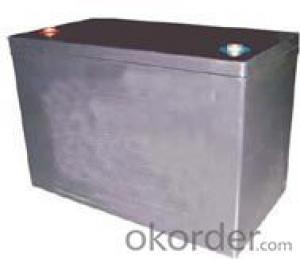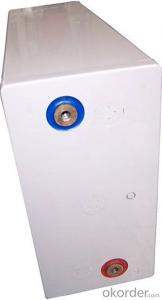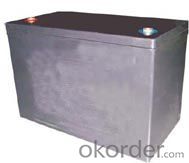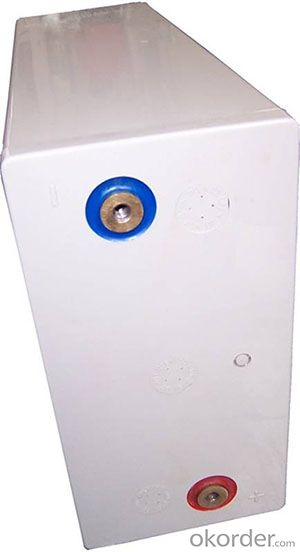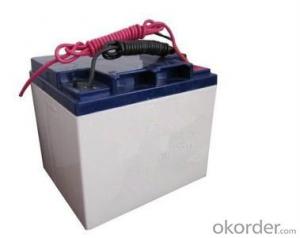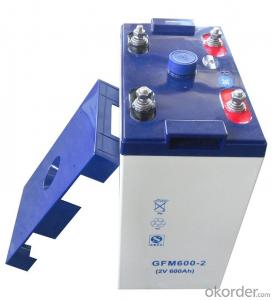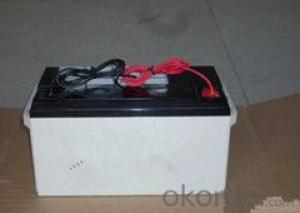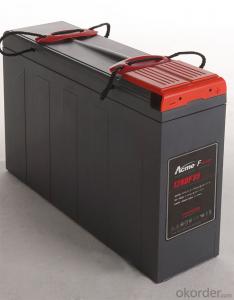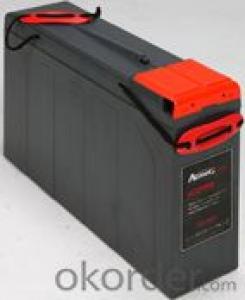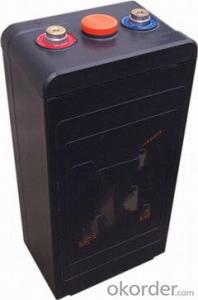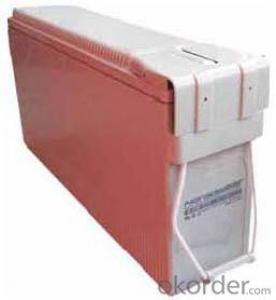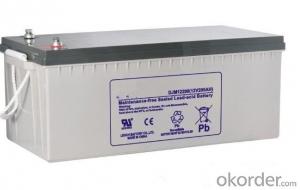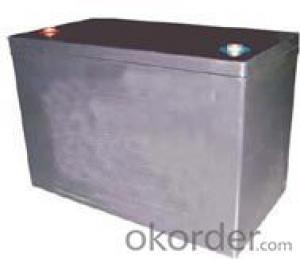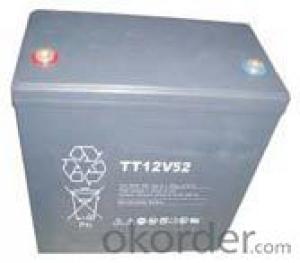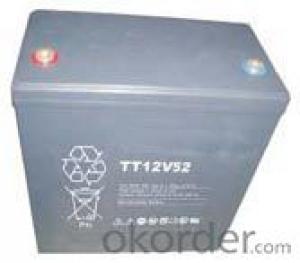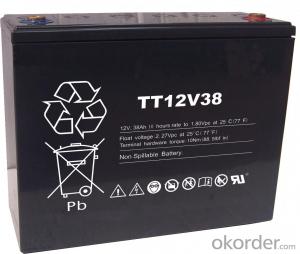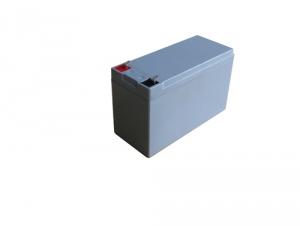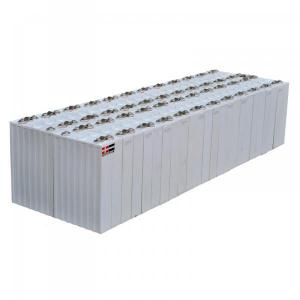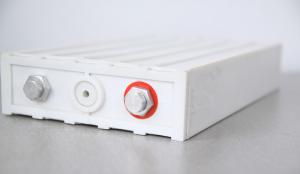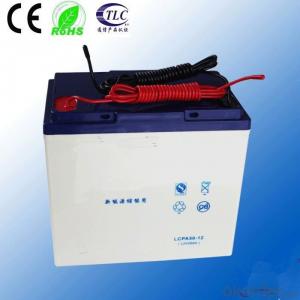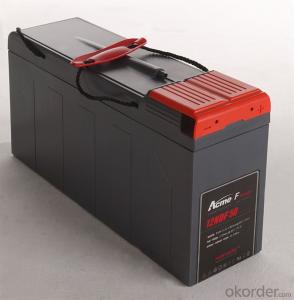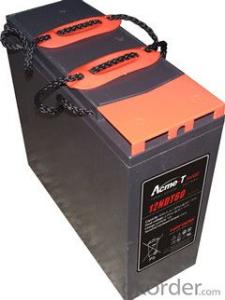Lead Acid Battery TT Series Battery TT12V38
- Loading Port:
- Shanghai
- Payment Terms:
- TT OR LC
- Min Order Qty:
- 1000 unit
- Supply Capability:
- 400000 unit/month
OKorder Service Pledge
OKorder Financial Service
You Might Also Like
Range summary:
NARADA TT series valve regulated lead acid batteries are designed with AGM(Absorbent Glass Mat) technology, high performance plates and electrolyte to gain extra power output for common power backup system applications widely used in the field of communication power, military and broadcast and television system.
The TT series batteries are ensured the quality with NARADA's QA system according to the ISO9001 and ISO14001 standard.

Technical feature:
Reliable Seal Technology
Special Patented grid alloy
Excellent high rate discharge performance
Low internal resistance AGM separator
Flame retardant ABS material container and cover compliant with UL94 V-0
Self-regulating pressure relief valve
The design float life is 12 years at 68oF(20oC)
Type: | TT12V38 | |
Voltage: | 12V | |
Nominal Capacity: | 38Ah(C10) | 38Ah(10 hours rate:) |
Length: | 250mm | |
Width: | 97mm | |
Height: | 195mm | |
Height with termial: | 198mm | |
Weight: | 13.7Kg |
Compliant standards :
IEC60896-21/22
Eurobatt guide
UL
Manufactured under system ISO9001(TUV)
Battery installation compliant with:
EN 50272-2 or local equivalents
Main application:
Cable Television
Communication Equipment
Security System
UPS
Control Equipment
Medical Equipment
Emergency Power System
Products characteristics:
Recommended float charge voltage for 12V battery:
2.25Vpc at 77oF(25oC)
Self discharge rate: < 2% per month at 25oC
Shelf life: six months at 68oF(20oC)
Valve regulated system, no water addition needed.
FAQ
![]() Is there a maximum temperature for charging lead acid batteries?
Is there a maximum temperature for charging lead acid batteries?
When charging lead acid batteries, the temperature should not exceed 120ĄăF. At this point the battery should be taken off charge and allowed to cool before resuming the charge process.
![]() Are lead acid batteries recyclable?
Are lead acid batteries recyclable?
Lead acid batteries are 100% recyclable. Lead is the most recycled metal in the world today. The plastic containers and covers of old batteries are neutralized, reground and used in the manufacture of new battery cases. The electrolyte can be processed for recycled waste water uses. In some cases, the electrolyte is cleaned and reprocessed and sold as battery grade electrolyte. In other instances, the sulfate content is removed as Ammonia Sulfate and used in fertilizers. The separators are often used as a fuel source for the recycling process.
![]() What is battery cycle life?
What is battery cycle life?
One cycle of a battery is a discharge from full charge to full discharge and a return to full charge again. The total number of cycles a battery can perform before failure is called its Cycle Life. Moat battery manufacturers will not discus the Cycle Life of their product. Many advertised Deep Cycle batteries have not been tested, or, which is the case with cranking batteries, were never designed for long Cycle Life .
- Q: How to repair the battery?
- To the battery in accordance with the 0.1C current discharge, record the discharge time. Its discharge current multiplied by the number of hours of time, is the battery repair capacity. If the Chongqing battery capacity to reach the nominal capacity of more than 70%, the end of the repair.
- Q: How is the capacity of the battery defined?
- 100AH capacity of the battery, fully charged after the 100A current discharge can be an hour to put the power finished. 50A current is 2 hours put away! 20A is 5 hours! Of course this is the theoretical value, in fact it is impossible to have a constant current discharge.
- Q: What are the technical parameters of the battery?
- The main performance parameters of the battery are the following: model; voltage; battery capacity; battery type, such as lead-acid batteries, alkaline batteries, lithium batteries, solar cells, fuel cells.
- Q: How to determine the battery is good or bad?
- Observe the battery electrolyte is turbid, turbidity that the battery positive plate softening. Observe the bottom of the battery whether there is sediment, if the plate off the battery capacity has been inadequate. Hand hit the battery two electrode piles If you hear an empty voice that pole pile and plate break. With a thick wire short-circuit positive and negative pile observation of the battery filling holes, such as the discovery of a bubble appears that the interval has been damaged.
- Q: How to deal with waste batteries?
- The old battery is ground and then sent to the furnace for heating, then the volatile mercury can be extracted, the temperature is higher when the zinc is also evaporated, it is also precious metals. Iron and manganese fusion after the steel to become the required ferromanganese alloy.
- Q: What are the hazards of battery over discharge?
- The battery discharge to the standard termination voltage when the internal resistance will become larger, the battery electrolyte concentration will become very thin, especially the battery plate micropores and battery plate surface these two points are almost neutral; battery over discharge because of Internal resistance will become larger, so the battery will appear inside the phenomenon of heat, the battery volume will appear fever expansion.
- Q: What are the advantages of maintenance-free batteries?
- The advantage of a maintenance-free battery is that the service life is twice as long as the dry battery! And in the use of the process without maintenance! The voltage is also relatively stable.
- Q: What is the meaning of the battery above 12v65Ah?
- 12V is said to be the voltage, 65Ah is the current. (A is the unit of current. H is the time unit .1 hours.)
- Q: How does battery activation work?
- If the battery is charged, because the battery discharge itself, the active substance to activate, not add acid, but should be added pure water (no minerals and impurities in the water) is best steaming water, and now you Since the addition, you can use water to wash several times, and then use 1C current charge to 2.3 times. Then discharge, so repeated several times, will be better. So that you can remove the vulcanization.
- Q: Lead-acid battery how to maintain?
- After passing the test, cover the exhaust cutting, pay attention to restore the filler, cover the battery cover, if the cover is glued, then glue bonding.
Send your message to us
Lead Acid Battery TT Series Battery TT12V38
- Loading Port:
- Shanghai
- Payment Terms:
- TT OR LC
- Min Order Qty:
- 1000 unit
- Supply Capability:
- 400000 unit/month
OKorder Service Pledge
OKorder Financial Service
Similar products
Hot products
Hot Searches
Related keywords
